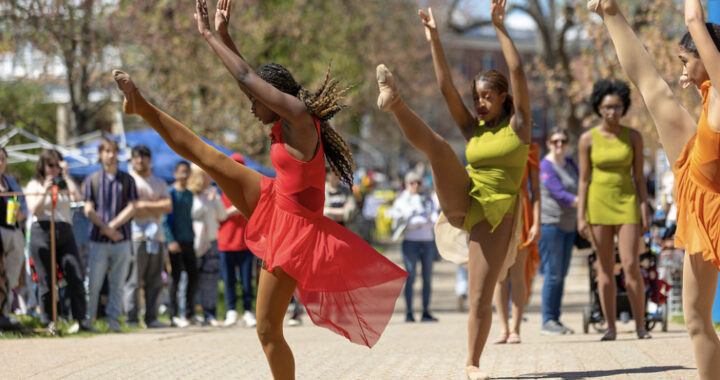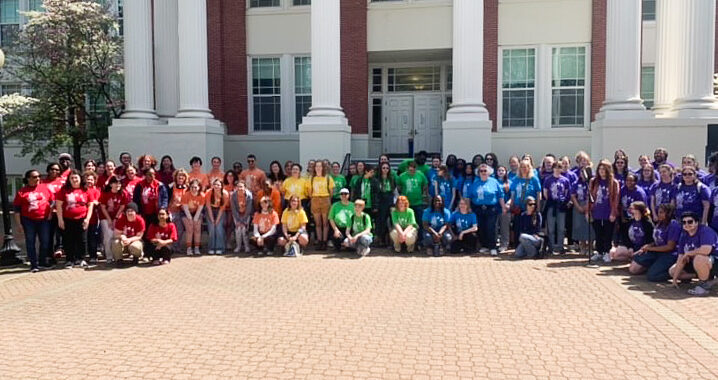College Struggles to Attract Minorities
5 min readBy MARY TURNER
Numbers this year were once again low for minority enrollments at the University of Mary Washington.
While there has been a slow rise over the last five years, no single minority group has had an enrollment this year of more than 45 incoming freshmen, according to school records.
Total minority enrollment at UMW this year is 16 percent of the incoming freshman class, up one percentage point from 2007.
According to data provided by the Office of Planning, Assessment, and Institutional Research, however, minority applications, acceptances, and enrollment figures were significantly lower than that of Caucasian students. African Americans had the lowest acceptance percentage, with 57 percent of applicants being accepted, and just over 25 percent of those accepted actually enrolling in the fall.
In 2003, only 35 percent of African-Americans who applied to the University were accepted.
One group that did manage to have a higher acceptance rate over Caucasian applicants was Native Americans. Over 80 percent of Native Americans who applied to UMW were accepted, while 72 percent of Caucasians who applied were accepted. However, only five out of the 19 Native Americans who were accepted actually enrolled.
According to African American students at the local Germanna Community College in Fredericksburg, there are several key issues that deter them from transferring to the University of Mary Washington.
Fewer than ten classes are offered annually at the University which focus on history and culture of minorities, in comparison with other Virginia schools such as Norfolk State University, a historically African American. Norfolk State requires over ten of its general education credits alone to be dedicated to courses that focus on African American history. Minority students who are looking for a curriculum that includes their own cultural history may shy away from UMW.
After hearing how few classes UMW has to offer students of African, Asian, or Latin American descent, Julian Greene said he would not transfer to UMW. Greene, a sophomore at Germanna, said that he knows the university has an outstanding academic reputation, but he feels it is important for him to take classes where he learns some cultural awareness not typically offered in public grade school.
Katrina Stewart, another sophomore from Germanna who is currently considering several universities in the area, said she also would not consider transferring to UMW. Stewart cited two main reasons.
“First of all they do not offer my intended major, and even if they did, they are not ethnically diverse,” she said.
Several UMW students of various ethnic backgrounds also had concerns about the school. Many of them said they would like to see more classes offered that would enlighten them on the rich heritages of minorities.
They say there is often little information taught in high schools about the history and cultural facets of minorities, so finding a college that offers such courses are often an important factor when considering which universities to attend.
A few UMW students also said that cost of tuition at the University may also present some obstacles for prospective students. Some students say that financial aid can be difficult to get.
One student, Jillian Rouse, recalled a friend of hers from last semester who had to drop out of school because she could not afford to attend UMW anymore. Rouse said that even though school staff personally tried to help her friend attain financial aid, it was not enough to cover the cost of attendance. Rouse said that she thinks if more financial aid were available it might help some minorities who come from lower-income families attend UMW.
Additional data provided by the Office of Planning, Assessment, and Institutional Research, along with Human Resources, show that minority students made up less than 15 percent of all students admitted in the year 2008. Minority employees make up roughly 13 percent of all UMW employees this year as well. Even then, most of those hired hold jobs considered classified, which includes such jobs as landscaping, custodial work, and servicing the food facilities.
Although Roy Weinstock, vice president for planning, assessment, and institutional research, said that though the University does devote energy towards specifically recruiting minority applicants and faculty members, these efforts have had little success. Employment figures supplied by the Human Resources department indicate that there has even been a loss of minority faculty members over the last few years.
Said Weinstock, “Hiring instructors of a minority ethnic group is difficult because many of them choose bigger schools with bigger budgets. The University cannot compete with the salaries of some of the larger universities out there.”
Another surprising figure was the ever growing “other” category. Since 2003, there has been a steadily increasing number of students who choose not to define their race when applying. These students may be part of the Caucasian population or one of the several minority groups on campus. When students choose not to disclose their race on applications, it makes it difficult for the recruiting office to accurately analyze the success of minority recruitment, according to school officials. .
Dr. Karina Tokareva, a visiting assistant professor of History at UMW, says that she would love to see more courses offered in a variety of specialties, but that it is a matter of budget, and hiring professors to teach those subjects.
“This is a small school, and is still in many ways very traditional. We are just now starting to move towards more progressive areas of studies in more recent years,” she said.
Tokareva added, “It was only a few decades ago that this school was all girls. Look how far we have come from that. These types of changes just take time.”
Paula Olson, a senior who is club treasurer of both Women of Color and Students Educating and Empowering Diversity, believes that while active efforts are being made to get more minorities on campus, there is still work to be done.
“The hard part is, we need to have more minorities to get more minorities, which can make the process a tough cycle to break,” she said.
Olson believes once interested minorities can visit the campus and see a stronger presence of other minority students in attendance, they will feel more comfortable applying and enrolling.











